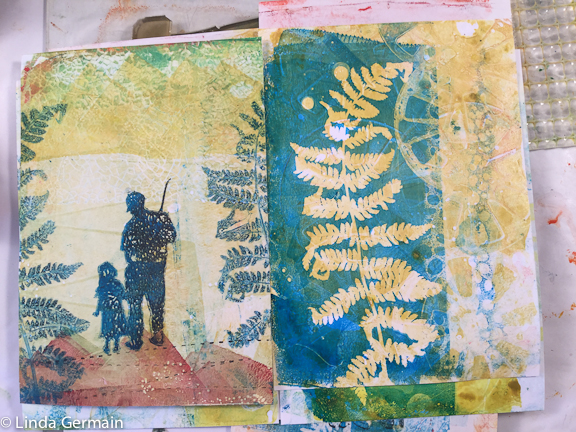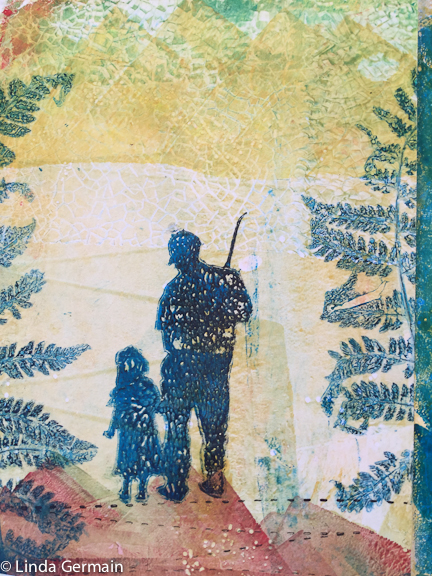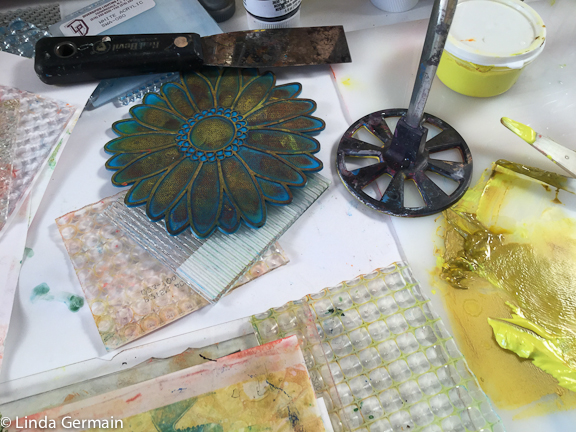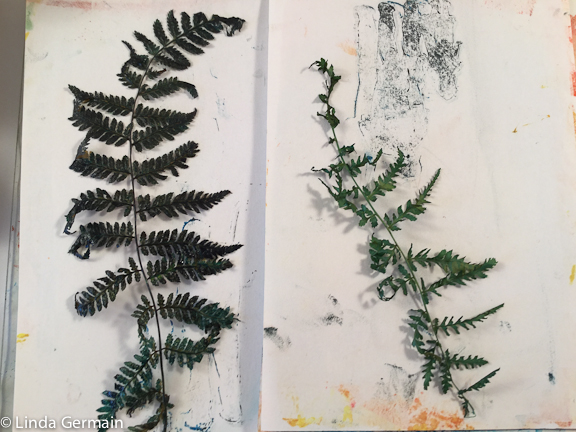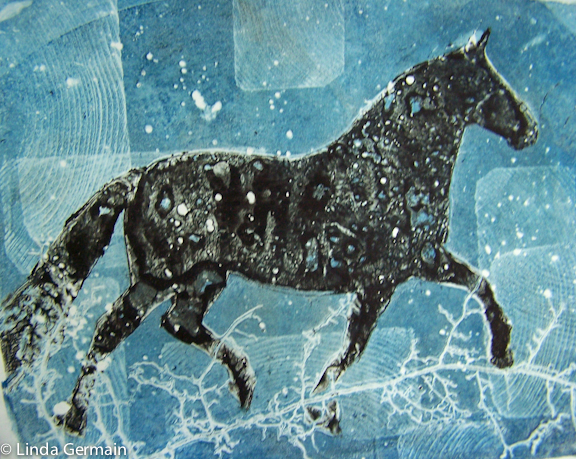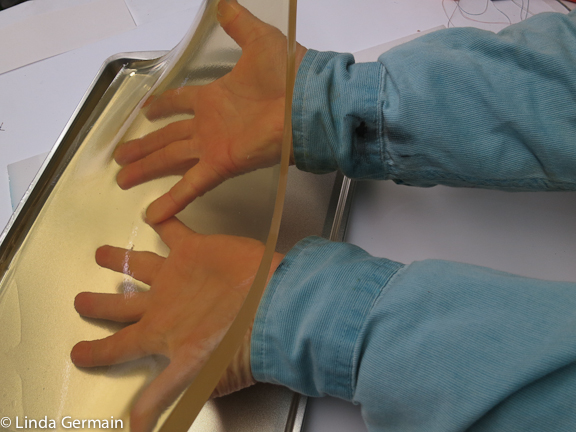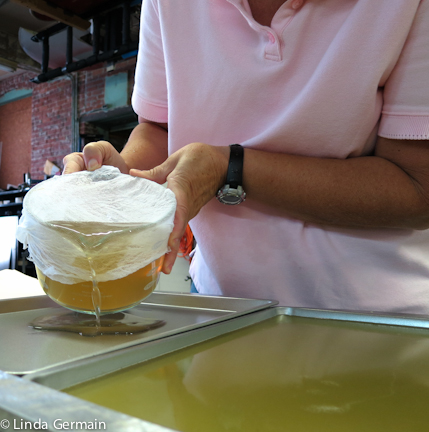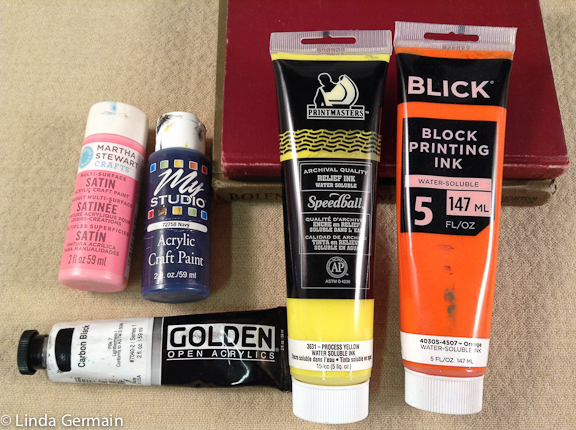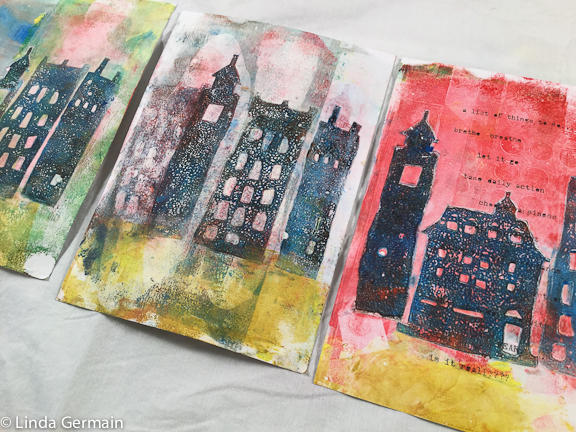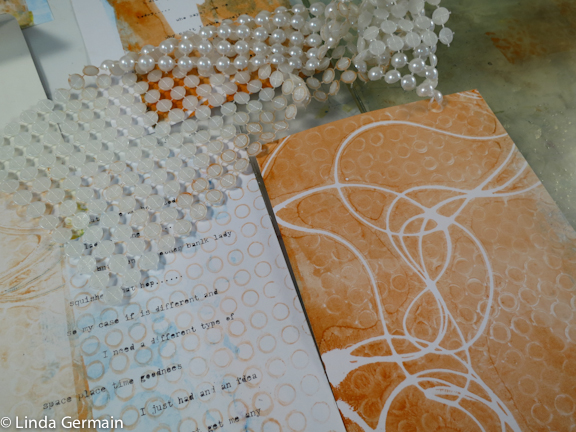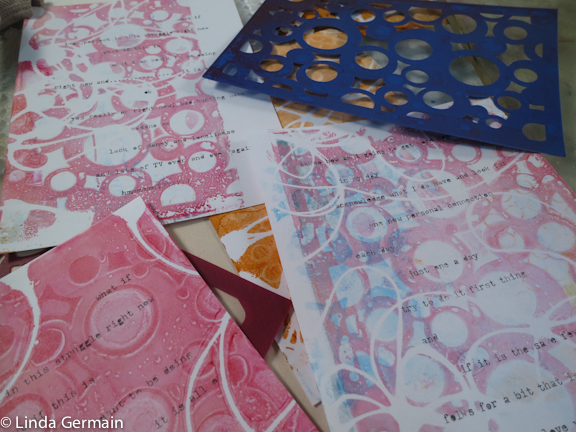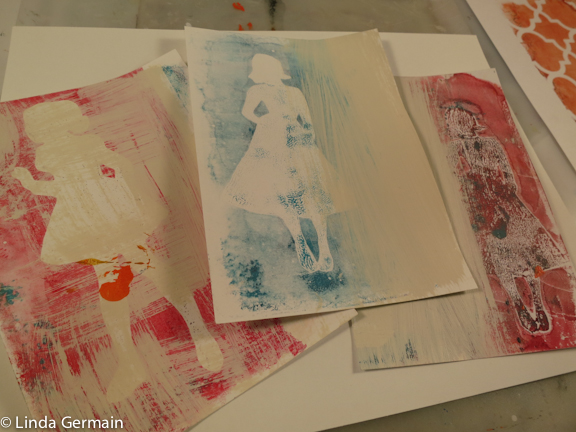One way to create successful gelatin prints
First, give yourself a break and embrace a definition of success that serves you. Being harsh and judgmental does not help.
One example of a definition of success that serves the players is the Baseball players batting average. Can you believe that these guys get paid big bucks and to be considered good they only need a .250 batting average? That means they only need a hit 25% of the time. Let’s embrace 25% = success.
Try this:
- Make 10 prints with just a couple stencils and stamping tools
- Use paper that you feel comfortable “wasting”
- See if you get 2 or 3 out of ten that you really like
I am betting that this environment and expectation will create success for you.
Another Idea:
One approach that I have with those 8 less than successful prints is that
- I come back to them on another day
- I work into them with just a few marks or
- I completely work over them
This really gives the prints new life and raises my “batting average” to .500. 🙂
By limiting your tools you:
- help create a cohesive composition
- creating boundaries for discovery and success
- eliminating chaos and confusion
So in the prints above I used a fern, the fishing stencil and 4 or so stamping tools.
If you would like more support in creating success with gelatin printmaking, then check out the current workshops.
One student’s experience in Make Monotypes – I wanted to take this class for quite a while, but as I had already experimented a fair bit with a gel plate, I wasn’t sure how much I’d learn.
My friend, a bookbinding instructor took the class a while back, and spoke very highly of it. She really enjoyed it and learned a lot. And I had seen some of her prints that she incorporated into her bookmaking projects.
I’m very glad I took the course – it was exactly what I wanted- it encouraged me to use my own images and experiment with found objects and stencils/masks I created myself.
So many other books, videos and blog posts focused on use of commercial stencils and other products. I really appreciate that this course focuses on finding or making one’s own tools!
Gerry McG.
One way to create successful gelatin prints Read More »
